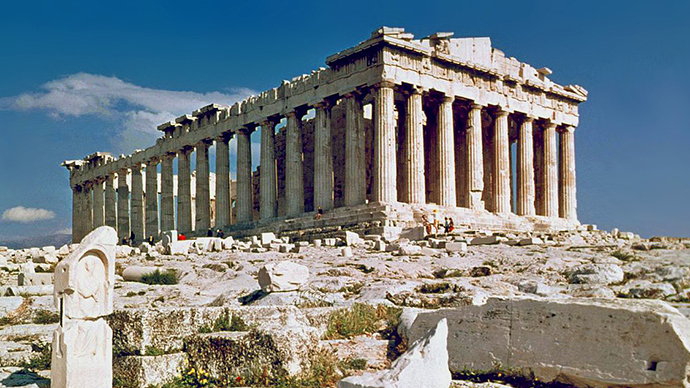From riches to ruins: Ancient Greeks 'stored millions in cash' in Parthenon attic

While Greece has become the first developed nation to default on its international obligations, archaeologists believe they have discovered the place where ancient Greeks may have once kept millions in silver and gold.
A team of researchers managed to recreate the attic inside one of the world's greatest cultural monuments in Athens. Although historical records do not reveal where exactly the coins were stored on the ancient landmark, the Acropolis of Athens, researchers believe that the Greeks kept their coin wealth in the Parthenon's attic. It has long been destroyed, but according to the researchers its floor would have been the size of a swimming pool, 19 meters wide by 50 meters long and about 3 meters high at the center, Live Science reported. During the period when the building was dedicated to the goddess Athena, the Parthenon was used primarily as a treasury.
"The attic of the Parthenon is the only suitable space large enough to hold all of the coins in the treasury," study researcher Spencer Pope, a professor at McMaster University in Hamilton, Canada, told Live Science. "While we cannot rule out the possibility that coins were distributed across numerous buildings, we should recall that the attic is the most secure space."
READ MORE: Austerity not enough to save Greece - leaked IMF documents
The remains of a staircase that would have led up to the attic suggest that it rather had a practical than a decorative use, likely to serve for fetching coins to and from the attic.
The researchers told Live Science that the attic's floor space would not only have provided room to keep a large amount of coins, but also would have meant their heavy weight could be equally distributed across a roomy area.
One decree cited by the researchers dated to around 433BC refers to "3,000 talents" transferred to the Acropolis for safekeeping, "a colossal sum of money," researchers told the journal. The highest-denomination coin at the time in Athens was a silver tetradrachm; it took 1,500 tetradrachms to make one talent, according to the researchers. This means the "3,000 talents" would be worth 4.5 million tetradrachms, weighing about 78 metric tons, researchers calculated.
"Gold coinage was always minimal in Athens, in part because Athens mined silver locally," Pope said. He added that the ancient writer Aeschylus called Athens and its nearby area a "fountain of silver." According to researchers, Athens may have minted some of its coins in gold though, which was worth about 14 times more than silver, Live Science reported. In that case the weight of the reserves might have been a little more modest.












